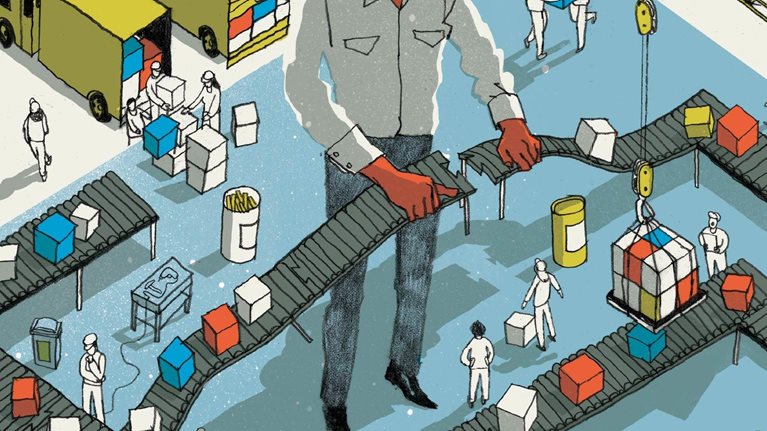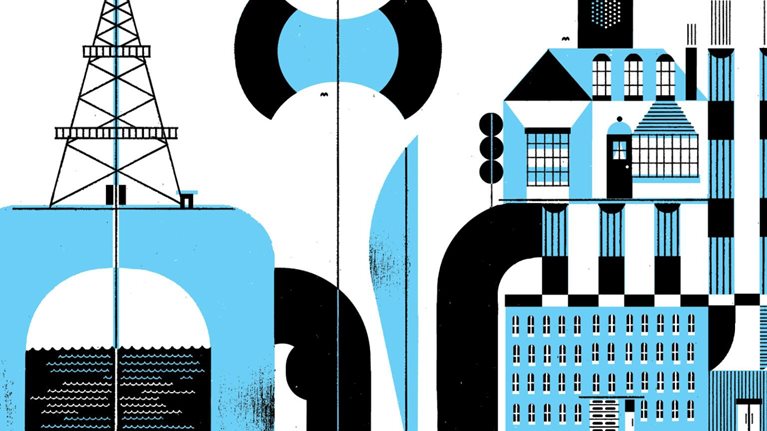The specter of a catastrophic failure in one or more links of a company’s global supply chain haunts senior executives in many industries: for example, the overnight flood or fire that disrupts a key supplier and quickly grinds production to a halt half a world away. Well founded as such worries are, given the increasingly globalized and interconnected operations of large organizations, they are hardly the only risks facing supply chains. No less significant are subtler, and more persistent, sources of disruption, such as fluctuating demand, labor rates, or commodity prices that together chip away at profits, increase costs, and force organizations to miss market opportunities.
All of these issues have become more acute in recent years as rising volatility, uncertainty, and business complexity have made reacting to—and planning for—changing market conditions more difficult than ever. The addition of some three billion consumers to the global middle class over the coming two decades, and the strains they will place on global resource supplies, all but guarantee that such pressures will continue.
Against this backdrop, some companies in industries as varied as automotive, building products, chemicals, high tech, and pharmaceuticals are refocusing global operations to make them more agile. Notably, these companies aren’t just spotting and mitigating supply chain risks. They are also seeking ways to use volatility to gain advantages over rivals.
In this article, we’ll examine three companies that are seeking advantages from greater operational agility. While each is benefiting in different ways, all are developing similar skills that should position their organizations well for years to come.
Mitigate downside risks
A globally diversified pharma company faced daunting operational challenges: not only were upstream supply shortfalls causing downstream production delays (and headaches for customers) but the company was also about to initiate quality-related product recalls. Together, these problems threatened to damage its profits and reputation seriously. What’s more, as senior leaders began to address the problems, they concluded that the organization’s existing processes weren’t sufficient to identify—let alone mitigate—potential sources of supply chain risk.
In response, a small team of executives investigated a set of high-priority products—those with great potential to influence the company’s financial results and public-health outcomes. The team also catalogued the risks associated with these products at major points along the supply chain, from product development to distribution. This approach allowed the team to visualize more clearly what problems might occur and where: for example, the risk that raw materials from suppliers might be rejected for quality reasons early in the process or that process disruptions could, later on, delay production in plants operated by the pharma company or a supplier.
In parallel, the team assessed the impact of each of these risks on three of the company’s major supply chain objectives: meeting customer demand in a timely way, as well as achieving cost and quality targets. By creating a scoring system that converted the assessments into simple numerical scores, the team could compare risk exposures and discuss the company’s appetite for risk in an “apples to apples” way at the corporate level and across divisional and functional boundaries.
The results were eye opening. Products representing more than 20 percent of the company’s revenues depended, at some point in their lifecycles, entirely on a single manufacturing location. That was a much higher proportion than senior executives had assumed, given the company’s large global network of plants. Similarly, fully three-quarters of the several dozen products that one business division made contained materials or components from single suppliers—a finding that had big implications for public health and the health of the company’s reputation should a supplier have problems. The exercise also highlighted where the company was likely to miss sales because of factors such as poor demand forecasting or capacity constraints (Exhibit 1).
An ‘apples to apples’ analysis of risk was eye opening for executives at a pharmaceutical company.

In addition to suggesting some immediate changes (measures to improve product quality, for instance), these findings helped executives create new risk thresholds to serve as operating “guardrails.” For example, the company no longer allows any particular plant to account for more than a certain percentage of corporate revenues. It also embarked on a far-reaching dual-sourcing program to increase its operating flexibility by guaranteeing better access to supply. Thus far, the company reckons it has lowered its risk exposure by more than 50 percent and almost completely eliminated the most catastrophic risks it faced, at a cost equivalent to less than 1 percent of annual revenues.
Finally, company leaders established a new, full-time team of managers with expertise in supply chains, marketing, finance, and other disciplines to work with the business units to track and report on risk-related issues regularly. The “risk dashboards” the team creates have given the company a common language to use when discussing risk and help prompt the kinds of timely conversations among functional leaders that should help identify potential problems before they occur.
Spot upside potential
Of course, the benefits of increased operational agility extend beyond identifying and protecting against downside risks. Indeed, when companies enable their operations to respond more quickly, they often unlock the ability to seize an upside potential that was previously unreachable.
Consider, for example, the experience of a global automaker whose leadership team was concerned about the industry’s multiyear development and investment cycles. Recently, they asked a team of supply chain executives to determine the company’s degree of flexibility and ability to react to potential swings in demand, both negative and positive, depending on how the fast-developing global debt crisis played out.
The company’s models had long been much better at predicting demand in stable macroeconomic conditions than in more volatile ones. The team therefore also took a broader look at the primary causes of demand swings facing the industry. Ultimately, it worked its way through two dozen or so sources of volatility until it arrived at the four it believed mattered most: growth in two key emerging markets, unpredictable regulation in those markets, regionalized downturn scenarios in established markets, and volatility associated with new market segments for which the company didn’t have enough historical baseline data to guide planning decisions. As the team discussed how various scenarios might play out, it realized that the existing system of linear extrapolation combined with best- and worst-case scenarios was too limited.
The “aha moment” came when the team decided to view the future as a distribution of outcomes and not a single, forecasted point. The team members knew they couldn’t build a system to manufacture all cars required in every possible scenario in which demand was higher than expected (such a system would have required investment levels that could not be economically justified in the majority of situations). Yet they did have the analytical capacity to model these scenarios, using Monte Carlo simulation and other traditional techniques.
This approach led the group to generate a probability distribution of demand (by geography and by product) that together included some 15,000 scenarios. To this bell curve, the team mapped the ability of the company’s production network to meet potential demand profitably in each scenario.
Happily, the executives saw that their planning group’s original estimates were broadly consistent with what the new approach predicted as the most likely outcome. Less happily, they could now also assess how much upside potential they had foregone in previous years and clearly see how much they might forgo in the coming ones if some of the more positive demand scenarios played out (Exhibit 2). In aggregate, they estimated this future upside potential represented a significant share of the company’s annual profits.
A global automaker’s demand–supply simulations revealed inflexibility.

Certainly, much of this amount was impossible to capture and always would be—only one demand scenario would prove correct, after all, and production resources are finite. Nonetheless, armed with this information, the executives could now begin to look for ways to increase the company’s operational flexibility on the margins to capture more of the upside if demand proved higher than expected. By running some of the scenarios at the level of individual production plants, the team spotted bottlenecks it could begin to unclog immediately. Some are being tackled through straightforward operating improvements at the line level; others will require modest tooling changes.
Adapt to changing conditions
Changing competitive dynamics are pressuring companies to introduce more and more product variations to chase new customers in new markets. In such circumstances, operational agility will increasingly represent a competitive edge. Consider the case of a global medical-device manufacturer that specializes in high-volume business-to-business products with relatively low margins. Over the years, the company has honed its operations to maximize efficiency and maintain advantages over competitors through a combination of high quality and large scale. In fact, many of the company’s operational capabilities in these respects are world class.
Those scale-oriented skills, though, were most effective in relatively stable markets—and the company had recently recognized that some of its core businesses were entering a phase of rapid flux. New technology was providing attackers with openings to introduce products that had the potential to redefine entire categories. Reacting to the changes, the company’s leaders realized, would require more flexibility not only on the shop floor but also upstream, during product development. Indeed, the two needs were interrelated. Only by increasing the proportion of shared components and designs in some products (and product families) could the company economically produce its own new offerings on the same machines and production lines.
Implicit in these changes was a belief that demand for several of the new products would grow. That wasn’t a foregone conclusion, though, and if the company moved too quickly toward more flexible production approaches, it might wind up with too much capacity and could even put at risk the economics of some of its traditional products. To mitigate this risk, the company carefully phased in the evolution of its manufacturing approach to ensure that the different stages of the work preserved the maximum option value of stopping early should the expected demand not materialize. Today, as the company continues to expand the new approaches across its production platform, its leaders estimate that these moves have already lowered capital costs for the targeted products by 40 percent as compared with the traditional approach, while reducing the ramp-up time for new product variations by 75 percent.
In parallel, the company is revisiting the skills it requires in product developers and operations staff to ensure that new hires have both the “hard” technical skills and the “softer” ones necessary to identify and prioritize uncertainties. In our experience, such forward-looking organizational moves are wise. Companies that can make the ability to preempt, detect, and respond to risk a part of the institutional mind-set will hold a big edge in an increasingly volatile world.
Across many industries, a rising tide of volatility, uncertainty, and business complexity is roiling markets and changing the nature of competition. Companies that can sense, assess, and respond to these pressures faster than rivals will be better at capturing the opportunities and mitigating the downside risks.


